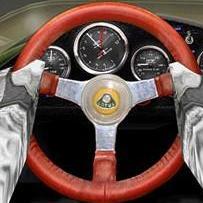-
Posts
5,194 -
Joined
-
Last visited
Content Type
Profiles
Forums
Events
Gallery
Everything posted by Bainford
-
Welcome to the forum, Chris.
-
Well done, Tom. Nice and clean, and great looking paint. That's one good looking Pontiac.
-
A very nice build. Nice, clean work, and the paint is fantastic. Very well done.
-
Very nice! I love the old school style. Lovely build.
-
Back in the 80s there was a fellow in my hometown with a '71 Mustang that he painted with a vacuum cleaner. The texture was not unlike that of the roller paint job. I strongly suspect that he used house paint. Back in the good ole days you could buy spraying equipment that fitted to the outlet of a vacuum cleaner. Not so great for cars, but fine for throwing some paint at the lattice work on the deck, etc. Ah, the days of simple innovation.
-

Mickey Thompsons '71 Mustang Funny car...
Bainford replied to Mothersworry's topic in WIP: Drag Racing Models
Thanks for that. They always bugged me too. Good to see they are actually well done. -

Mickey Thompsons '71 Mustang Funny car...
Bainford replied to Mothersworry's topic in WIP: Drag Racing Models
Love it! Mickey Thompson's Mustangs were my favourite funnies of the era. This one is looking super nice. -

'Duel' movie truck question: wheel/tire size
Bainford replied to robdebie's topic in Model Building Questions and Answers
This seems to be a project on which you are sweating the details. As such, and if you have the means, I suggest going for the tires with detailed sidewalls. Any model, but especially trucks, where the tires are large and exposed, sidewall detail matters. For those modelers who build for realism and authenticity, bare sidewalls just won't cut it. Unfortunately, the stripping of sidewall detail is a travesty that high-end builders have had to navigate around for a couple decades now. -

Morgan Automotive Detail?
Bainford replied to Sidney Schwartz's topic in Model Building Questions and Answers
It's a fine line between a groove and a rut. -
Perhaps. That was my first thought when I heard of the stuff, but then they mentioned it as a treatment for 'blooming' on old tires. I have a ton of old tires turning white & powdery, and this stuff just might be the solution (pun not intended). I have tried soaking them in bleach, which seems to work, but I hate messing with bleach.
-
This is coming along great. You're nailing the look at all turns. Loving it!
-
Interesting. I'm going to look into this. I don't actually use much solvent glue these days, but there are times when it is the 'go to' choice.
-
The first place I would look is Keith Marks Public Home | mofobow@hotmail.com | Fotki.com, photo and video sharing made easy.
-
This is the first I've heard of them. They have a juicy looking 351 Cleveland that I could certainly find a use for.
-

1/8 Pocher Lotus 72
Bainford replied to Chris Smith's topic in WIP: Other Racing: Road Racing, Land Speed Racers
Good looking Lotus. One of Colin's all-time greats. Nice work. -

Wire Tie Downs from Aluminum Cans
Bainford replied to StevenGuthmiller's topic in Tips, Tricks, and Tutorials
I used to use beer can aluminum and turkey pan aluminum for such things, but I use the aluminum tape now. Very pliable, and the stickum is very strong so no need to mess with an additional adhesive. -

Another old guy, but from Massachusetts.
Bainford replied to tinhorn's topic in Welcome! Introduce Yourself
Welcome to the forum, Ced. -
Looking good so far. The 70 Javelin was such a good looking car, in my opinion one of the best looking American cars built. I'll be watching this one come together.
-

70s Era Asphalt Modified
Bainford replied to OldNYJim's topic in WIP: Stock Cars (NASCAR, Super Stock, Late Model, etc.)
This coming along great. You’re nailing the look. Impressive work on the rear deck lettering. -

Decal sheets stuck together
Bainford replied to redscampi's topic in Model Building Questions and Answers
Regarding your current decals, give them a couple good coats of liquid decal film before using, to restore some decal integrity. Also, depending on the nature of the discolouration, taping the sheet to a sunny window, good side facing out, can sometimes clear them up. May take a few days. If the window is prone to getting damp at night, put the decals in a sealed zip lock bag, first. Good luck. Sounds like an interesting kit. -

Decal sheets stuck together
Bainford replied to redscampi's topic in Model Building Questions and Answers
They are an online business. I’d post a link but I’m too much of a luddite to do it from my phone. Indycals.net should get you there, or just google indycals. They have some nice stuff for open wheel racers. I haven’t ordered from them myself, but they are highly recommended by forum members who have. -

Odd Place to Find Models
Bainford replied to Calb56's topic in General Automotive Talk (Trucks and Cars)
Interesting… I wonder what their shipping rates to Canada are like. -

What did you see on the road today?
Bainford replied to Harry P.'s topic in General Automotive Talk (Trucks and Cars)
Star Wagon! Sweet! Good looking one. Been looking into buying one of these for the last few years. Lots of options for these things. Tough trying to find one that ticks all the boxes, plus a 5-spd, but they're out there.


